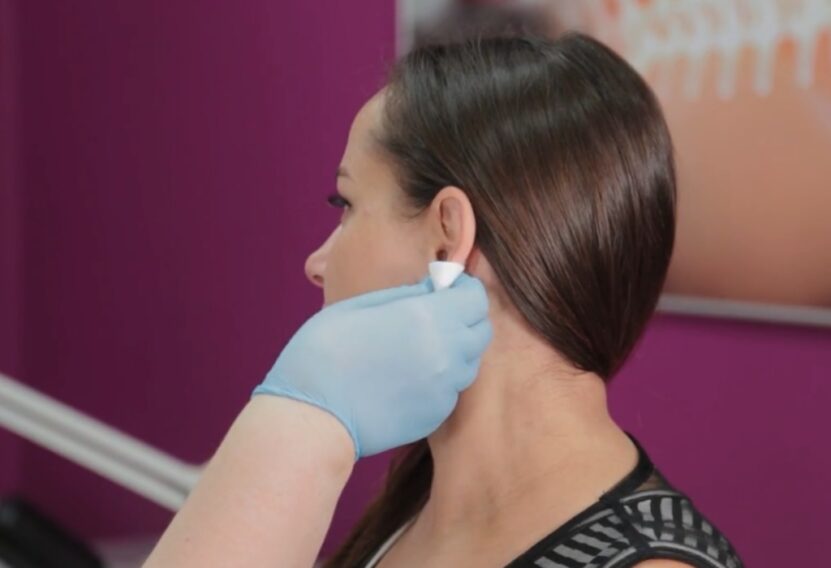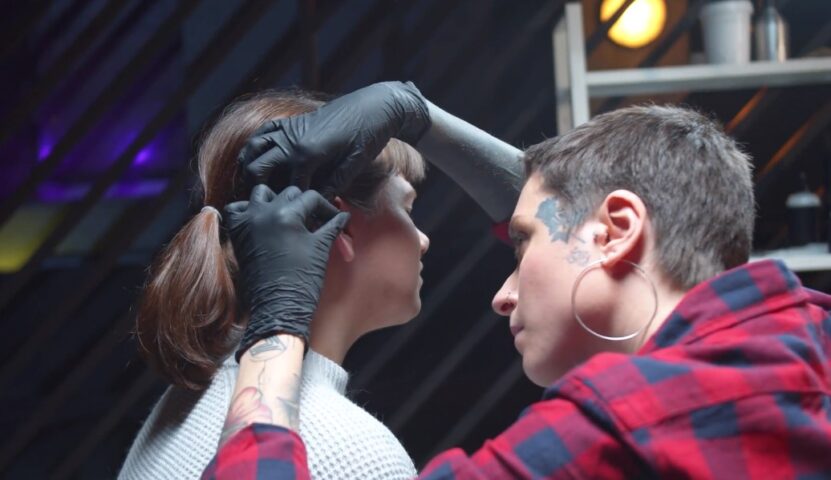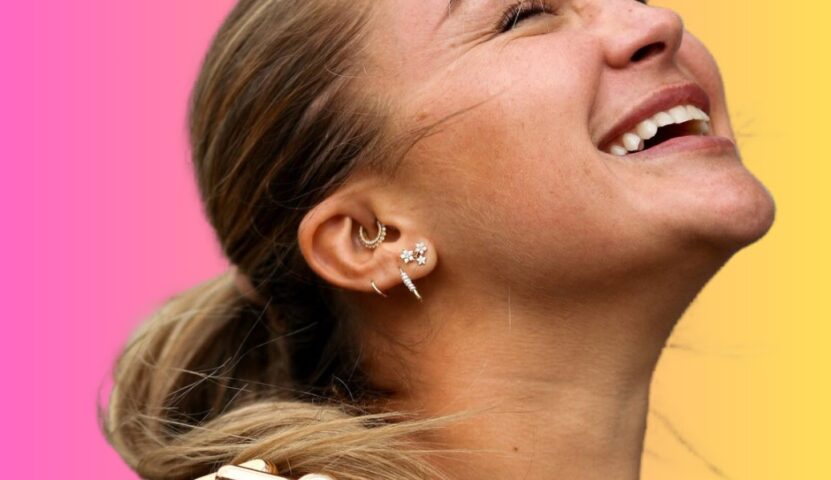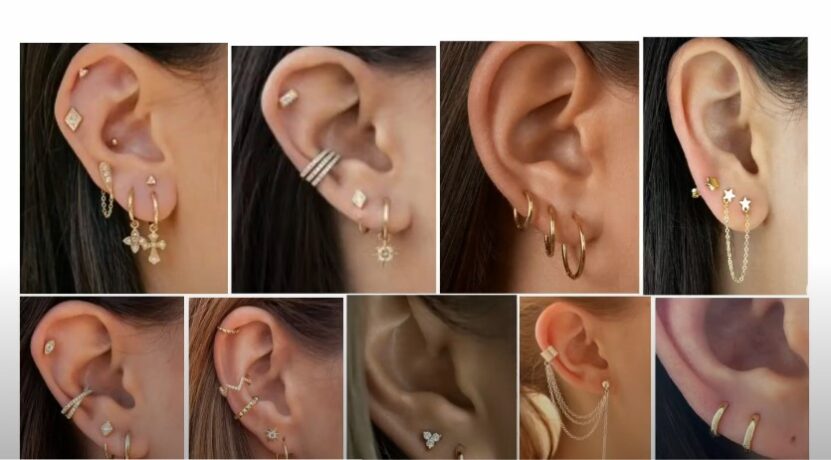Cartilage piercings, a popular form of body art, can serve as a stunning expression of personal style and individuality. They bring a unique aesthetic appeal, decorating our bodies in intriguing ways. But while they can be a beautiful adornment, they’re not without potential risks – the primary one being infection.
Although quite rare, a cartilage piercing infection can escalate into a serious issue if not treated promptly and properly. This comprehensive guide aims to help you navigate the world of cartilage piercings more safely.
It will provide insights into what cartilage piercing infections are, how to recognize them, how to manage them, and steps to prevent them. The guide will also debunk common myths and misconceptions surrounding this topic, explain the role of jewelry in such infections, and provide tips for aftercare and long-term care for your piercing.
Cartilage Piercing Infections Explained

The human body is a marvel of nature, with cartilage serving as a key component. This tough, flexible tissue lends shape to various parts of our bodies, such as the nose, ears, and others – all popular areas for piercings.
But when a piercing is not properly cared for, or aftercare instructions are not diligently followed, the piercing area can become infected. Cartilage piercing infections occur when harmful bacteria infiltrate the piercing, leading to inflammation, pain, and potentially more severe complications if left untreated.
Unsanitary piercing equipment, poor aftercare, touching the piercing with unclean hands, or using unsuitable jewelry are common culprits that can allow these bacteria to find their way into the piercing.
Recognizing Signs of Infection
Recognizing the signs of a cartilage piercing infection is critical for initiating timely treatment. Some of the most common symptoms include persistent redness, swelling, warmth, and pain around the piercing site – these should not be mistaken for the normal healing process that follows a new piercing.
More severe signs indicative of an advanced infection include a yellow or green discharge, an unpleasant odor, or even a fever. If these symptoms appear, or if your piercing is causing you constant discomfort beyond the usual healing pain, it’s essential to seek medical help immediately. Delaying treatment can result in the infection spreading, causing more complications.
Dealing with a Bump on a Cartilage Piercing
A bump around your cartilage piercing can be a common yet alarming issue. These bumps, often called keloids or hypertrophic scars, are essentially overgrowths of scar tissue that develop in response to skin trauma, such as a piercing.
They may appear as raised, reddish nodules around the piercing site and can sometimes be mistaken for an infection. To manage a keloid, you can apply a warm compress to the area to alleviate discomfort.
Over-the-counter treatments such as silicone sheets can also help reduce their size. However, for larger or persistent bumps, it’s wise to consult a healthcare professional who may recommend more aggressive treatments like steroid injections, cryotherapy, or even surgical removal.
How to Treat and Clean an Infected Cartilage Piercing
The first and foremost step in treating infected cartilage piercing is consulting a healthcare provider for professional advice. Depending on the severity of the infection, they may prescribe topical or oral antibiotics to combat the invading bacteria.
In addition to medical intervention, maintaining good hygiene is paramount. Clean the infected area gently but thoroughly using a saline solution twice daily – this can help flush out bacteria and promote healing. It’s crucial not to remove the jewelry unless advised by a professional, as doing so could cause the piercing hole to close up, potentially trapping the infection inside.
Prevention Steps

Prevention is undeniably better than cure. Before getting a piercing, it’s essential to ensure you’re choosing a reputable and licensed piercer who adheres to stringent hygiene standards. This includes using sterilized equipment and wearing gloves during the procedure.
Post-piercing, always follow the aftercare instructions provided by your piercer diligently. This typically involves cleaning the piercing site with a saline solution at least twice daily, refraining from touching the piercing with dirty hands, and not changing the jewelry prematurely before the piercing is fully healed.
Do’s and Don’ts for Cartilage Piercing Care
When it comes to cartilage piercing care, there are certain practices to embrace and others to avoid for the health and longevity of your piercing. Do wash your hands thoroughly before touching the piercing.
Do clean your piercing regularly with a saline solution. Do avoid sleeping on the side of the piercing, as the pressure could cause irritation or delay healing. Don’t swim in public pools, hot tubs, or open bodies of water immediately after getting a piercing, as these environments can be teeming with bacteria.
Don’t apply makeup or skincare products on or around the piercing site, as they may contain ingredients that could irritate the piercing.
The Difference Between Irritation and Infection
It’s important to distinguish between irritation and infection when monitoring a cartilage piercing. While they may share some symptoms, such as redness and swelling, there are key differences. Irritation is typically a reaction to a certain irritant – it could be the type of jewelry, the cleaning solution, or even hair products.
Irritation usually resolves on its own once the irritant is removed and does not involve systemic symptoms like fever. On the other hand, an infection is caused by bacteria invading the piercing and will not resolve without appropriate treatment. Symptoms of infection include persistent redness, increased warmth, yellow or green discharge, an unpleasant odor, and possibly, a fever.
Natural Remedies
While it’s important to note that medical treatment is necessary for infections, certain natural remedies can aid in soothing minor irritations or speeding up the healing process. One such remedy is applying chamomile tea compresses – simply steep a chamomile tea bag in hot water, let it cool a bit, and then apply it to the irritated area.
Another commonly recommended remedy is a sea salt soak. However, it’s crucial to always consult a healthcare provider before starting any home remedies to avoid unintentionally exacerbating the situation.
Long-Term Care for Cartilage Piercings
Even after your cartilage piercing has healed, long-term care is crucial to maintain its health. This includes regular cleaning of the piercing, rotating the jewelry occasionally to ensure it doesn’t get stuck, and routinely checking the area for any signs of infection or irritation. You should also remove the jewelry and clean it separately every few months to ensure there are no bacteria lurking on its surface.
Common Myths and Misconceptions
When it comes to cartilage piercings, misinformation can be rampant. For instance, many people mistakenly believe that using alcohol or hydrogen peroxide is an effective way to clean piercings.
However, these substances can actually damage the skin and slow down the healing process. Another common myth is that changing jewelry frequently helps the piercing heal faster – in reality, changing jewelry before the piercing has fully healed can irritate the area and increase the risk of infection.
The Role of Jewelry in Cartilage Piercing Infections

The type of jewelry you choose for your piercing plays a significant role in your risk of developing an infection. It’s crucial to opt for hypoallergenic materials like surgical steel, titanium, or 14K gold to minimize the risk of allergic reactions.
Also, avoid jewelry with rough edges, moving parts, or poor-quality coatings, as these could potentially scratch or irritate the piercing site, providing a gateway for bacteria.
Healing Time for Infected Cartilage Piercings
Healing an infected cartilage piercing can be a gradual process. Depending on the severity of the infection and the effectiveness of the treatment, it can take anywhere from a few weeks to several months to fully heal.
It’s important to continue following your aftercare instructions even after the infection has cleared to prevent a recurrence. Remember, patience and diligent care are your allies in this healing journey.
Psychological Impact

Cartilage piercing infections can also have a psychological impact. Dealing with an infection can cause stress and anxiety, especially if complications arise or the healing process is prolonged. It’s crucial to consult a healthcare professional promptly to address these concerns and seek reassurance. Remember, it’s okay to ask for help and advice when you need it.
Tips for Safe Piercing Aftercare
A good aftercare routine is your best defense against infections. Always follow the aftercare tips provided by your piercer, which generally include cleaning the area regularly, avoiding unnecessary handling of the piercing, not changing the jewelry prematurely, and seeking medical help if you notice any signs of infection. Remember, your piercing is a wound, and like any wound, it needs to be cared for properly to heal well.
Final Words
While cartilage piercing infections can be concerning, proper care and attention can help prevent and treat them effectively. Understanding the causes, signs, and treatment options is crucial to ensuring a safe and satisfying piercing experience. Always remember, when in doubt, seek professional medical advice.

